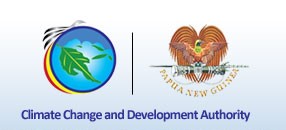Huon Peninsula, Papua New Guinea, is a…
Huon Peninsula, Papua New Guinea, is a tectonically unstable, uplifting shoreline ringed by emergent coral terraces. The terraces were formed during episodes of rapid sea-level rise when corals constructed large, discrete coral platforms that were subsequently uplifted. Uranium series ages of four prominent Huon Peninsula last glacial (OIS 3) coral terraces coincide with the timing of major North Atlantic climate reversals at intervals of 6000^7000 yr between 30 000 yr and 60 000 yr ago. Terrace elevations, when combined with uplift, indicate 10^15-m high sea-level excursions at these times. We attribute the growth of the terraces directly to sea-level rises arising from ice-calving episodes from major North Atlantic ice-sheets and the Antarctic ice-sheet that precipitated extremes of cold climate called Heinrich events. These periods are associated with major discharges of land-based ice and enhanced concentrations of ice-rafted debris in deep-sea cores. Sea-levels at this time were 60^90 m lower than present.
Data and Resource
We have dated corals sampled from the uplifted…
| Field | Value |
|---|---|
| Publisher | PNG Conservation and Environment Protection Authority, Climate Change and Development Authority in PNG |
| Modified | |
| Release Date | |
| Identifier | 2d461b28-0edc-468c-995c-29555e4ad13e |
| Spatial / Geographical Coverage Location | Papua New Guinea |
| Relevant Countries | Papua New Guinea |
| License |
SPREP Public Licence
![[Open Data]](https://assets.okfn.org/images/ok_buttons/od_80x15_blue.png)
|
